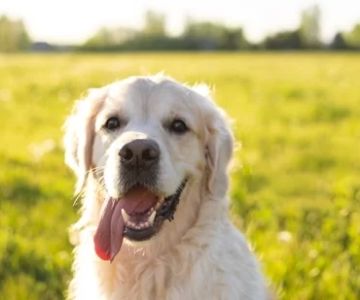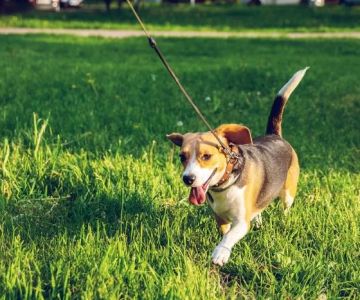Why Exercise is Important for Senior Dogs
As dogs age, they experience changes in their physical and mental health. Senior dogs may become less active due to arthritis, joint pain, or even cognitive decline. However, maintaining an appropriate exercise routine is essential to keeping them healthy and happy. Regular exercise helps with weight management, improves circulation, and maintains muscle mass. It can also keep their joints flexible, reduce the risk of obesity, and provide mental stimulation, which is important for their overall well-being.
Exercise is not just about physical health; it also helps prevent boredom and anxiety in older dogs. It is important to adjust the intensity of exercises to suit your dog’s specific needs and limitations. Regular physical activity is a key factor in increasing the quality of life for senior dogs, making them more energetic and alert even in their later years.
Best Exercises for Senior Dogs
When choosing exercises for senior dogs, it is crucial to focus on low-impact activities that provide benefits without straining their joints or causing fatigue. Below are some of the best exercises for senior dogs:

1730 Matthews Township Pkwy a1, Matthews, NC 28105, USA
See Details1. Gentle Walks
Short, gentle walks are one of the best exercises for senior dogs. They help improve circulation, strengthen muscles, and maintain joint health. Be mindful of the weather and the surface you walk on, as rough terrains and extreme temperatures may be harder for your senior dog.
2. Swimming
Swimming is an excellent exercise for dogs with arthritis or joint pain, as it provides a full-body workout while being easy on the joints. Many senior dogs enjoy swimming, and it helps to strengthen their muscles and improve flexibility without putting stress on their bones.
3. Puzzle Toys and Mental Stimulation
Exercise isn’t just physical; mental stimulation is equally important. Puzzle toys, interactive games, or training sessions can keep your senior dog’s brain engaged and provide a form of low-impact exercise. These activities are perfect for dogs with reduced mobility or those who need to conserve energy.
4. Low-Impact Fetch
If your senior dog still enjoys fetching, consider using a soft ball or a toy that’s easy to carry and throw. Keep the distance short to prevent overexertion. This type of play helps maintain muscle tone and promotes mobility without pushing your dog too hard.
5. Stretching and Massage
Stretching and gentle massages are great for senior dogs, especially those with joint stiffness. These exercises can increase flexibility and help alleviate discomfort. Regular stretching routines or professional massages can provide relief for sore muscles and enhance overall comfort for your dog.
How to Choose the Right Exercise for Your Dog
Choosing the right exercises for your senior dog depends on their health, breed, and mobility level. Here are some tips to help you determine the best activities:
1. Consult Your Veterinarian
Before starting any new exercise routine, it’s important to consult with your veterinarian. They can assess your dog’s current health status and recommend appropriate exercises. A veterinarian at Hidden Brook Veterinary, for example, can help you tailor a fitness plan based on your dog's needs and any underlying health issues.
2. Consider Your Dog's Health Conditions
If your dog suffers from arthritis, heart disease, or other chronic conditions, the exercise should be adapted to suit their limitations. Avoid high-intensity workouts, and instead, focus on gentler options like walking, swimming, or stretching. Make sure the exercises do not cause pain or discomfort.
3. Start Slow and Monitor Progress
Begin with short sessions and gradually increase the duration as your dog builds stamina. Always monitor your dog's energy levels, and stop the activity if they seem tired or uncomfortable. Regularly check for signs of joint swelling, limping, or fatigue.
4. Make it Fun
Exercise should be enjoyable for your senior dog! Keep activities lighthearted and incorporate their favorite toys or games. This will help them stay motivated and engaged in the routine.
Real-Life Example: A Senior Dog's Journey
Meet Max, a 10-year-old Labrador who had started to slow down due to arthritis. Max's owner was concerned about his declining mobility and sought advice from the team at Hidden Brook Veterinary. Together, they designed a low-impact exercise program that included daily short walks, swimming twice a week, and some mental stimulation exercises with puzzle toys. Over time, Max showed noticeable improvement in his mobility and energy levels, and his owner was delighted to see him enjoying his walks again. This success story highlights the importance of tailored exercise plans for senior dogs and how proper care can make a huge difference in their quality of life.
Conclusion
Exercise is crucial for maintaining the health and well-being of senior dogs, helping them stay physically active and mentally sharp. By incorporating gentle exercises like walking, swimming, and stretching into their routine, you can improve their quality of life and reduce the risks of health complications. Remember, every dog is unique, and it’s important to choose activities that are appropriate for their age and health condition. If you’re unsure about the best exercises for your senior dog, don’t hesitate to consult with the experienced veterinarians at Hidden Brook Veterinary for tailored advice.










